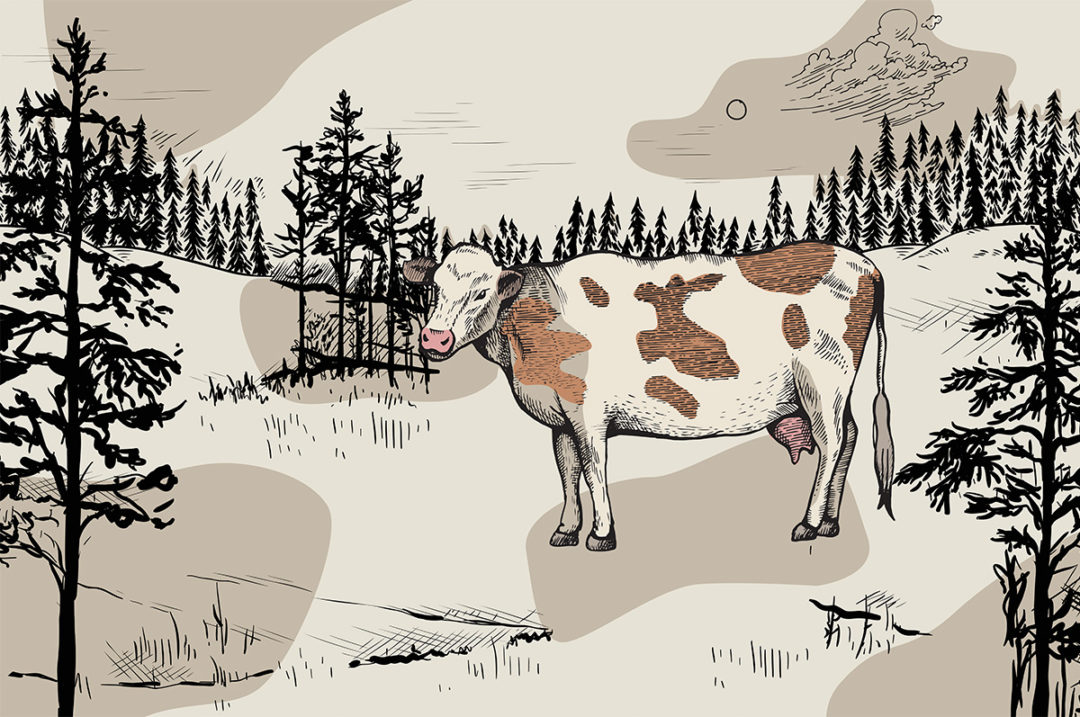Ever heard the expression "missing the forest for the trees"? Sometimes when we singularly focus on a detail so intensely, we miss the world changing around us. A great example of this was provided in an old genetics textbook; you may remember the term “single-trait selection.” This is the result of a very intensive focus on one particular trait, and at times it is warranted and useful. However, sometimes the results can be disastrous because in solving one issue (and losing focus on the totality of what those genes produce), several new problems are created.
As a dairy industry, our thought process on prophylactic fresh cow interventions has become dangerously close to missing the forest for the trees. For the better part of two decades, our fresh cow focus has been on combating milk fever. As a result, the advent and adoption of periparturient dietary cation-anion difference (DCAD) diets has caused the fresh cow clinical milk fever incidence rate to drop to well under 3% industrywide. Despite that drop, the focus with fresh cows remains seemingly singularly focused on calcium status. In academia, discussions on hypocalcemia continue to lead in scientific journal publication subject matter. But is the focus warranted? This singular focus on one nutrient has led to a neglect of the cascade of challenges fresh cows face and to commoditize fresh cow calcium interventions. Extensive research on calcium-only prophylactic fresh cow supplements has yielded only selective effects and has left the people that care for dairy cows blindly wandering through the forest without a flashlight trying to identify cows that might need it.
So let us retrace our steps. Starting in 2003, academia started to publish findings that dairy cows experience hypocalcemia when they are immune challenged. This in many ways turned the calcium conundrum on its head because it changed the calcium deficiency discussion from being what many viewed as solely a nutritional deficiency to now having implications relating to health status.
To further complicate the problem in 2020, it was found that intravenous calcium infusion during immune system challenges has detrimental effects on production, compared to cows allowed to experience moderate subclinical hypocalcemia. In 2012, a study found that only high-producing cows and lame cows benefit from an oral calcium bolus application of calcium. With such limited and disparaging effects of calcium supplementation, it forced producers to commoditize calcium supplements and play “Guess Who” when trying to develop a protocol for which cows should receive it. Much work has been done on quantitative tests, but none have widely been accepted as a commercially viable calcium status determinate. Thus, giving the cheapest form of oral calcium to cows at risk from nutritional calcium deficiency based mostly on historical or predictive measures, is our only guide in the forest.
Perhaps it is time to think beyond the accepted focus on a single parameter and acknowledge that as we have selected for high production, we have heightened the need to support lactogenesis across many nutrients. The strategy we’ve largely employed has failed to address the multiple nutritional deficiencies and physiological challenges of the fresh cow. There are five outcomes necessary to prepare every cow for a successful 305-day lactation.
1. Microbiome
Microbial populations in the rumen need to be able to adjust and adapt quickly to accommodate the abrupt change from a high-fiber ration to a high-starch lactation diet.
2. Immunity
The fresh cow is experiencing multiple epithelial-level challenges, from uterine stress and the stress of parturition, to potential ruminal damage due to acidosis, to gut permeability and infiltration of toxins. Immune cells are needed to help protect the gut barrier integrity and reduce inflammation, thereby facilitating a more-economically productive utilization of nutrients.
3. Lactation
Milk is more than just calcium; milk synthesis requires dozens of micro and macro nutrients. Acknowledging that in early lactation, getting a cow to eat what the ration says she needs is our biggest challenge. To maximize her peak milk production and lactation performance, she needs more than just one nutrient.
4. Reproduction
A swift return to a positive energy balance optimizes health and body condition; this in turn supports reproductive potential.
5. Sustainability
Productive cows are cows that have longevity and can repeat the freshening process multiple times successfully. By supporting her productivity, this elevates cow welfare and enhances dairy’s environmental stewardship.
We as an industry are in a singular focus and missing the forest around our fresh cows, and we need to refocus on what is necessary to prepare every cow for lactation – preparing cows for a successful lactation by critically looking at the big picture, the entire forest, if you will.
References omitted but available upon request. Click here to email an editor.







